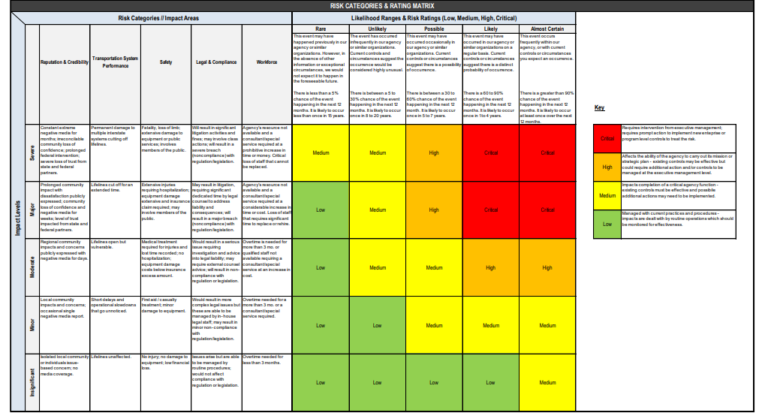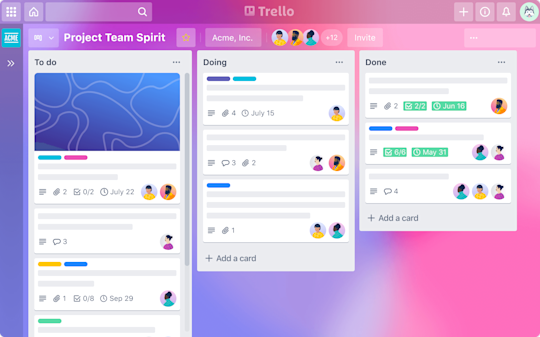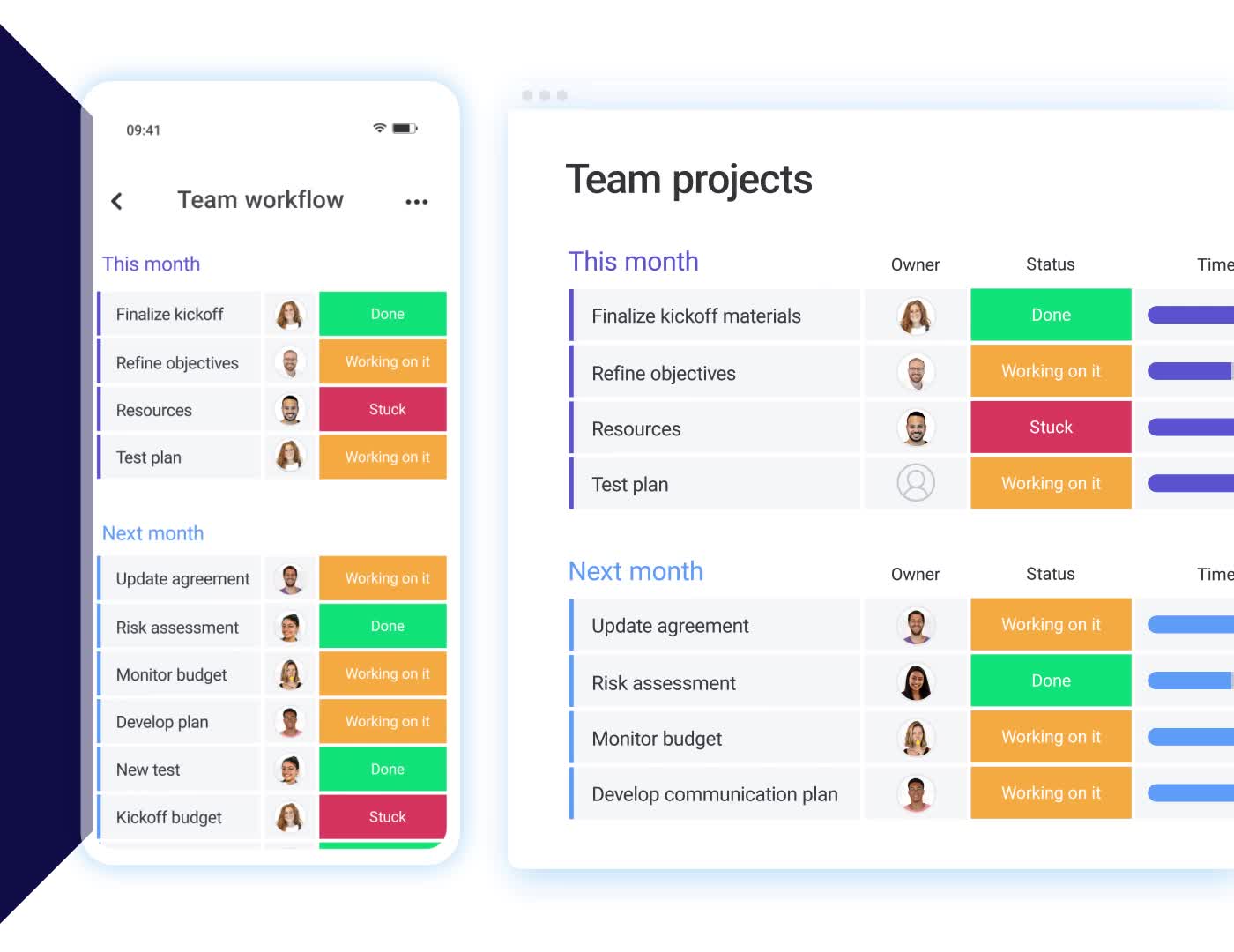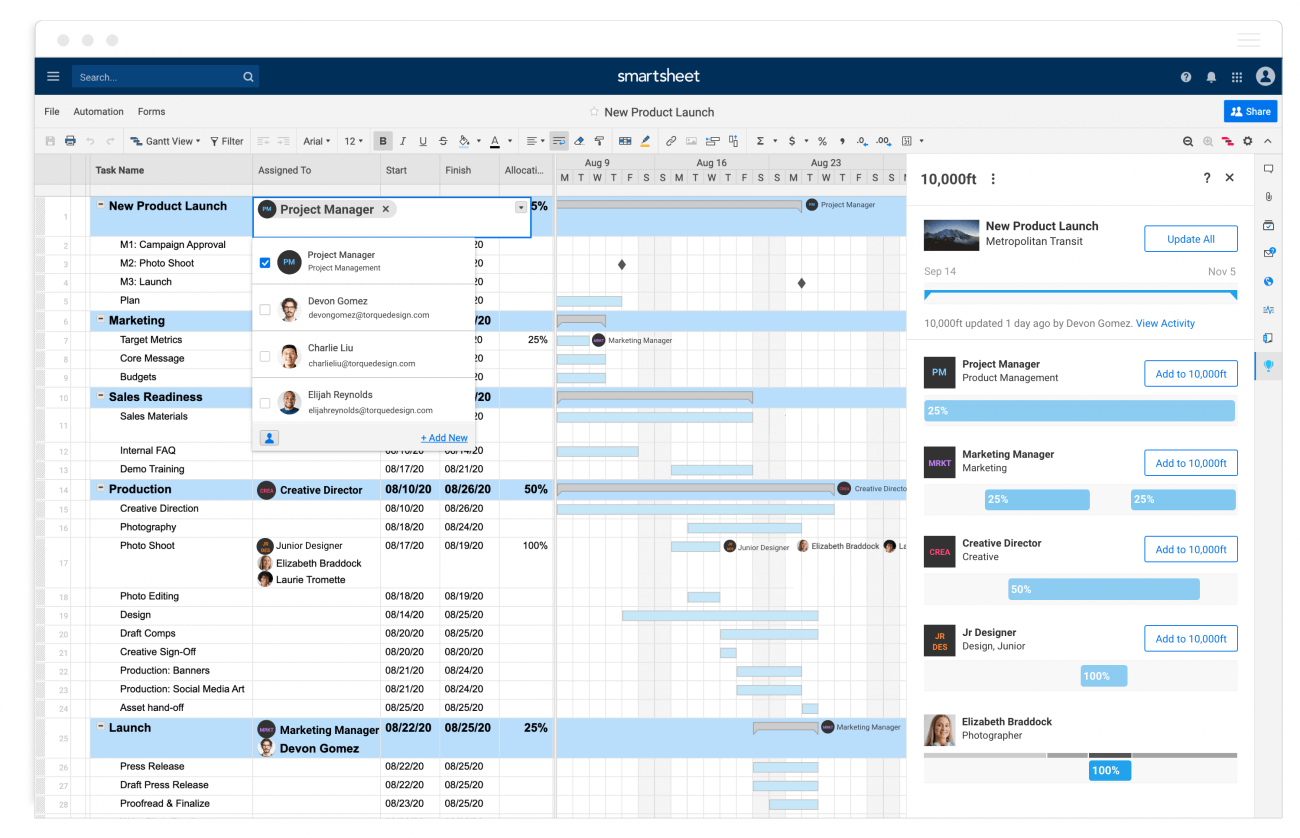Risk Management in Agile Projects: Balancing Speed and Stability
11 min read

Agile projects are often characterized by their speed and flexibility. Teams work in iterative cycles, constantly adjusting based on feedback, delivering new features rapidly, and staying responsive to market or product direction changes. The need for speed is crucial, but there's another side to the coin that can't be ignored—stability. How do you balance these two seemingly opposing forces in a way that keeps your project on track without sacrificing the quality or the integrity of your work?
That’s where risk management comes in. In Agile projects, risk isn’t something to be feared or avoided—it's something to be identified, understood, and managed proactively. With the right approach, you can stay on course, minimize disruptions, and ensure the project delivers both quickly and sustainably.
Let’s take a closer look at how you can balance speed and stability in Agile projects through effective risk management.
Also read: What is Agile Methodology? Exploring Agile Frameworks for Technical Project Managers
Understanding Risks in Agile Projects
First, let’s talk about what risk actually is in the context of Agile. In Agile environments, risk is anything that can negatively affect the project’s success—whether it’s technical debt, shifting priorities, unclear requirements, or even external factors like market changes or regulatory updates.
The nature of Agile means that risks tend to be more dynamic, changing over time as new insights are gained during the iteration cycles. Agile teams focus on delivering working software frequently, but the trade-off is that risks can pile up if they’re not monitored and addressed regularly. The fast-paced nature of Agile can sometimes make it easy to overlook potential issues that could cause problems down the line.
The Speed vs. Stability Dilemma
Agile’s core principle is delivering value to the customer as quickly as possible, but that doesn’t mean you should be reckless. Moving too quickly without understanding or addressing risks could result in technical debt, unreliable software, or unaligned stakeholder expectations. On the other hand, slowing down to analyze every little detail might seem like the safer route, but it could undermine the very principle of Agile—quick feedback and iteration.
This is where the art of balancing speed and stability comes into play. Agile teams must constantly assess their pace, ensuring they’re moving fast enough to deliver value and taking the necessary steps to reduce the likelihood of encountering larger issues later.

Want to manage your Agile project risks like a pro? Check out Middleware’s Jira plugin for seamless risk tracking and management, and keep your projects on course with confidence!
How to Manage Risks in Agile Projects While Maintaining the Speed?
Frequent Risk Assessment

Risk management in Agile isn’t a one-time task—it’s ongoing. Like how Agile teams hold regular retrospectives to reflect on their processes, they should also have regular risk assessments built into their workflow.
These assessments should take place at the start of each sprint and as part of regular standups or backlog refinement sessions. The key here is to integrate risk management into your team’s culture so that it becomes part of your day-to-day work. Risks can be anything from technical challenges to potential delays caused by dependencies on other teams. By regularly identifying and discussing these risks, teams can make informed decisions about how to proceed.
Prioritize Risks
Not all risks are created equal. Some risks have the potential to completely derail a project, while others are relatively minor and can be mitigated over time.
The goal is to prioritize risks based on their impact and likelihood. For example, a critical feature that depends on a third-party API that’s experiencing issues should be flagged as a high priority and addressed immediately. Meanwhile, a risk like a slight delay in a less critical feature can be left for later sprints without major consequences.
By focusing on the most significant risks first, you allow your team to move quickly without compromising the overall stability of the project. The idea is to solve the biggest, most immediate risks first, while keeping an eye on smaller ones that may require attention later.
Risk Mitigation Through Automation and Testing

One of the most effective ways to ensure stability while moving fast is by implementing a robust automation and testing strategy. Automated testing can catch errors early and provide immediate feedback on code quality, which minimizes the risk of bugs slipping into production. It also gives teams the confidence to push out features quickly because they know they’ve tested everything thoroughly.
Automating repetitive tasks like testing and deployment frees up time for teams to focus on higher-level risks that require more attention. Additionally, continuous integration/continuous delivery (CI/CD) pipelines can help teams deliver new features rapidly while ensuring stability through automated quality checks.
Also read: The Hidden Costs of Manual Sprint Reporting: How Automation Can Save You 8+ Hours Every Week
Embrace a Collaborative Culture

Risk management in Agile projects doesn’t just fall on the shoulders of one person. It requires collaboration across the entire team—product owners, developers, QA, designers, and even stakeholders. When everyone is aware of potential risks, they can contribute their insights and help mitigate those risks early on.
For example, if the product owner notices a potential change in the market that could affect your project, they can raise it during sprint planning. Similarly, if the development team sees a bottleneck forming due to a technical limitation, they can raise it in the standup and adjust priorities accordingly. By building a culture of transparency and collaboration, your team can react quickly to emerging risks and adapt without losing momentum.
Plan for the Unexpected

Even with the best planning, not all risks can be predicted. Sometimes, unforeseen challenges crop up—whether it’s a sudden shift in user requirements, a new competitor entering the market, or a technical issue that wasn’t on your radar.
In these cases, it’s important to have a contingency plan. Agile teams should always leave room for flexibility in their sprint plans. If something goes wrong, there should be a process in place to quickly reassess priorities and reallocate resources. This flexibility allows you to pivot without major disruptions to the overall project.
Also read: Streamlining Agile Project Management with Jira: A Practical Feature Guide
Tools to Support Risk Management in Agile Projects
Managing risks in Agile projects can be complicated, but the right tools can make all the difference.
Here are some of the most effective tools to support risk management in Agile projects:
1. Jira

Jira is a well-known Agile project management tool that’s widely used for issue tracking and project management. But what many teams may not realize is that Jira can be a powerhouse for risk management as well.
Risk Tracking: With Jira, teams can create and manage risk tickets, categorizing them by their severity, impact, and likelihood of occurring. You can set up custom fields to track the status and progress of risk mitigation efforts.
Integration with Agile Boards: By integrating risk tickets with your Agile boards (Scrum or Kanban), you can easily keep track of risks in the context of your workflow. It helps ensure that risk management is part of your sprint planning and daily standups.
Reporting and Dashboards: Jira offers powerful reporting and dashboard features to visualize risk data. You can set up specific reports that highlight risks, their status, and the mitigation efforts, making it easy to communicate risks to stakeholders.
Middleware Jira Plugin

If you want to take your risk management efforts in Jira to the next level, Middleware’s Jira plugin could be a game changer. It allows you to track and manage risks directly within Jira by linking them to sprints, epics, and stories. This seamless integration ensures that risks are addressed promptly and don’t fall through the cracks. Middleware also helps in visualizing risks across the project lifecycle, making sure everyone stays aligned on risk priorities.
Also read: The Best Jira Plugins for Technical Project Managers
2. Risk Register Tools

A Risk Register is a simple yet powerful tool that helps teams log and track risks in a centralized place. It’s essentially a document or software system where you record each identified risk, its likelihood, impact, and mitigation plan. The key here is to have a living document that’s continuously updated and referenced throughout the project.
Excel/Google Sheets: While basic, using an Excel or Google Sheet Risk Register can still be effective for small teams or projects. You can create columns for risk descriptions, severity, likelihood, mitigation actions, and status updates. It’s simple and easy to keep up to date.
Dedicated Software: For larger teams or more complex projects, there are tools specifically designed to help teams maintain a Risk Register. Tools like Risk Register Software (such as RiskWatch, Risk Radar, or Risk Matrix) allow teams to easily log risks, assign owners, and track mitigation efforts in real-time. These platforms often come with built-in risk analysis features that make it easier to prioritize risks.
3. Trello

Trello is a lightweight and visually appealing project management tool that’s great for smaller teams or less complex projects. While it’s often used for task management, it can be adapted to track risks as well.
Boards and Lists: You can create a Trello board specifically for risks and create lists for different stages of the risk management process, such as "Identified Risks," "Mitigation Actions," and "Resolved Risks."
Card Customization: Each risk can be added as a card, where you can provide detailed information, categorize risks, and assign team members to handle mitigation efforts.
Power-Ups: Trello’s Power-Ups (integrations) can enhance its functionality for risk management.
While Trello may not have all the advanced risk tracking features of tools like Jira, its flexibility and simplicity make it a solid choice for smaller teams or projects that don’t require complex risk management solutions.
4. Confluence
Confluence, often used in conjunction with Jira, is a great tool for documentation and collaboration, and it can be extremely useful for risk management in Agile projects.
Living Documents: Confluence allows you to create living documents that can be updated regularly. You can set up a risk management page where team members can document risks, assess their impact, and log mitigation strategies.
Collaboration and Transparency: Since Confluence is designed for collaboration, it makes it easy for team members to discuss risks, offer suggestions, and update the status of risks in real-time. This keeps everyone on the same page and fosters a transparent approach to risk management.
Integration with Jira: With Confluence’s integration with Jira, you can link your Confluence risk register to Jira tickets. This provides a seamless way to track risks within the context of your development work and ensures that everyone has access to up-to-date information.
Also read: How to Effectively Use Jira and Confluence for Project Management?
5. Monday.com

Monday.com is a work operating system that offers a highly customizable platform for managing various aspects of projects, including risk management. Its visual layout and automation capabilities make it a great choice for Agile teams.
Custom Dashboards: You can create custom dashboards for risk management that give you an overview of all identified risks, their priority, and the status of mitigation efforts. This allows stakeholders and team members to see risk data at a glance.
Automations: Monday.com lets you set up automated notifications for risks that need immediate attention. For example, if a risk's likelihood increases or mitigation actions need to be updated, the tool can automatically notify the relevant team members.
Collaboration Features: Like Confluence, Monday.com offers great collaboration features, allowing teams to comment on risk items, share files, and discuss potential solutions in real-time.
6. Smartsheet

For teams looking for a more structured approach to risk management, Smartsheet is an excellent tool. It combines the familiarity of a spreadsheet with project management capabilities.
Risk Templates: Smartsheet offers risk management templates that allow teams to easily track risks, assess their impact, and define mitigation actions. These templates also allow you to assess risks based on a risk matrix (probability vs. impact) and prioritize them accordingly.
Gantt Charts: Smartsheet’s Gantt charts can be helpful for tracking the timeline of risk mitigation activities, ensuring that risks are addressed within the necessary timeframes.
Real-Time Collaboration: Smartsheet supports real-time updates and collaboration, making it easy for teams to work together on risk management. It also integrates well with other tools like Jira, allowing teams to link risks to project tasks and milestones.
Final Thoughts
Risk management is essential for balancing speed and stability in Agile projects. It’s not just about identifying risks but also about being proactive and creating a culture of collaboration, transparency, and flexibility. By continuously assessing risks, prioritizing them effectively, and utilizing the right tools, Agile teams can keep the momentum going while ensuring the project stays on track.
Remember, speed without stability can lead to chaos, but stability without speed can leave you stuck in the past. It’s all about finding that sweet spot where risks are managed, but your team can still innovate and deliver quickly.
Want to manage your Agile project risks like a pro? Check out Middleware’s Jira plugin for seamless risk tracking and management, and keep your projects on course with confidence!
FAQs
How do you manage risk in agile projects?
Risk in agile projects is managed through continuous communication, iterative planning, and frequent review of progress to identify and address issues early.
What are the five phases of risk management in agile methodology?
The five phases of risk management in agile are risk identification, risk assessment, risk mitigation, risk monitoring, and risk response.
What are the 3 or 4 biggest challenges to the management of projects using agile methodologies?
The biggest challenges include maintaining consistent communication, managing scope creep, aligning cross-functional teams, and ensuring stakeholders remain engaged.
What are the four major steps of project risk management?
The four major steps of project risk management are risk identification, risk assessment, risk mitigation, and risk monitoring.


